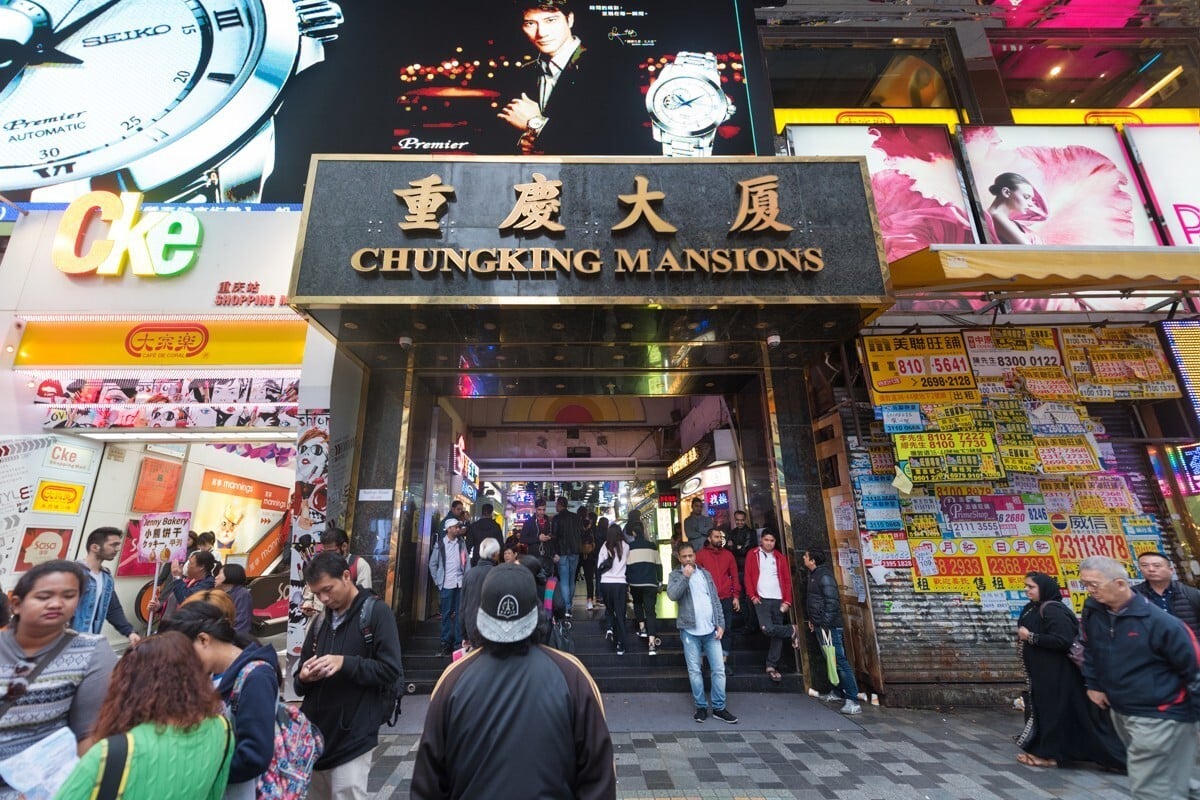
Inside Hong Kong’s Chungking Mansions: 5 blocks of diversity, culture and community
- The iconic building in Tsim Sha Tsui is known for great food and cheap accommodation, but it’s the people that make the complex so special
- Chungking's inhabitants are made up of around 120 different nationalities
 Chungking Mansions in Hong Kong is home to people from more than 120 nations.
Chungking Mansions in Hong Kong is home to people from more than 120 nations.From a distance, the building’s run-down facade wouldn’t attract more than a glance. But it’s the buzz of activity on – and around – the steps of Chungking Mansions that sets it apart from its neighbouring buildings on Nathan Road.
The complex, in Tsim Sha Tsui, opened in 1961. It was designed to allow residents and retailers to coexist under one roof, an idea inspired by the lack of space in Hong Kong. It has five blocks; each block has 17 storeys and two lifts. While this is no longer that unusual in Hong Kong, the real charm of Chungking Mansions lies in its inhabitants who, according to Chinese University anthropologist Gordon Mathews, are made up of at least 120 different nationalities.
In one section of the mansion, there’s an amalgamation of mobile repair shops, restaurants and convenience stores; in another, you will find food stalls and clothes shops. And you will also find people from all corners of the world operating these booths.
5 budget-friendly restaurants you need to try in Chungking Mansions
Nana Chen, author of Chungking Mansions: Photographs of Hong Kong’s Last Ghetto, says she was drawn to the complex for this very reason. “I wanted to learn about the people that live there,” says Chen. “There is a real stigma associated with the building and I wanted to paint it and its residents in a new light.”
Chungking Mansions is a somewhat notorious hotspot for theft and other criminal activities. But Chen says it is unfair to assume this defines the complex, as most of the people who live there are generous, kind and embody a sense of community.
One New Year’s Eve, Chen, who was taking photographs for her book, recalls seeing hundreds of the building’s residents swarming the corridors and singing and dancing, while offering each other food.
“It was such a show of harmony,” says Chen. “Dance can truly reveal someone’s culture and personality.”
By the late 1960s, many of the apartments inside the building had been converted into guest houses, which served tourists looking for cheap accommodation in Hong Kong. Today, while some of those guest houses remain, a handful have been converted back to apartments. Now they are home to many immigrants from India, Pakistan, Nepal, Nigeria, and Ghana, to name a few. The building also acts as a safe place for asylum seekers from some Asian and African countries.
Hong Kong has more than 100,000 asylum seekers, many of whom are fleeing difficult situations in their home country.
Hong Kong stories: The Indian immigrant who helped build HKU and the road that bears his name
“There are so many cultures under one roof, there’s always a familiar face for someone who might be new to Hong Kong,” says Chen. “That’s why for many [asylum seekers], the building acts as their refuge.”
In fact, Christian Action, a non-government organisation that offers support to asylum seekers and refugees, operates its Centre for Refugees from the 16th floor of Block E at Chungking Mansions.
Upon entering its office, you’ll find a group of people from all walks of life huddled around a TV, chatting and sharing jokes. One floor below, the centre’s kitchen gives off an aroma of international flavours. Every day, the centre prepares lunch for its visitors. Everyone, not just asylum seekers, are welcome – and encouraged – to join.
It took Chen nearly 10 years to complete her project, during which she visited every nook and cranny of the building, and spoke to some of its residents.
Through her journey, Chen says she found the true meaning of home.
As a child, Chen grew up in several different countries which led to her to feel she “had no place to call home”.
“Chungking Mansions and its people have helped me in my own search for home and my meaning of home.”
